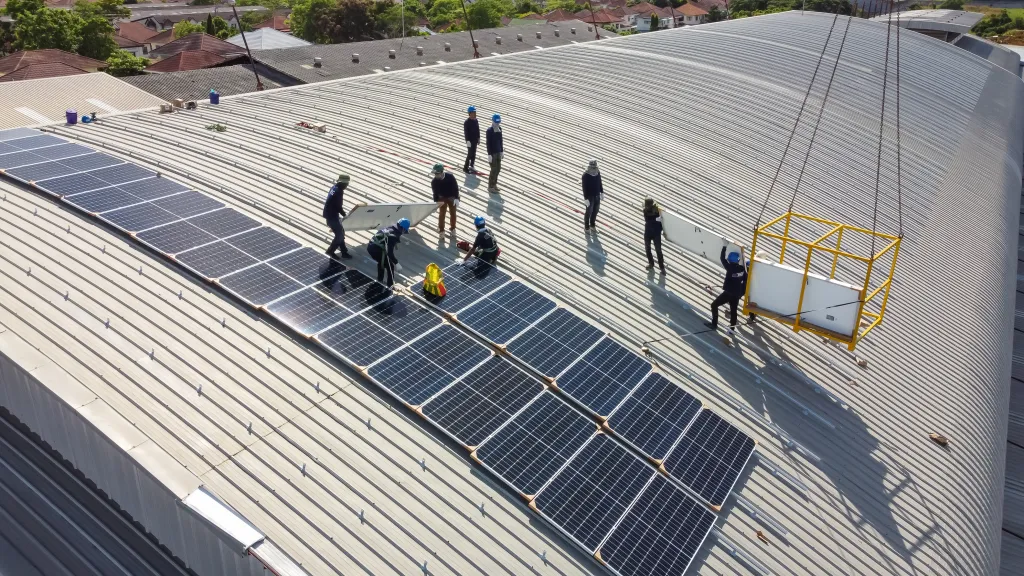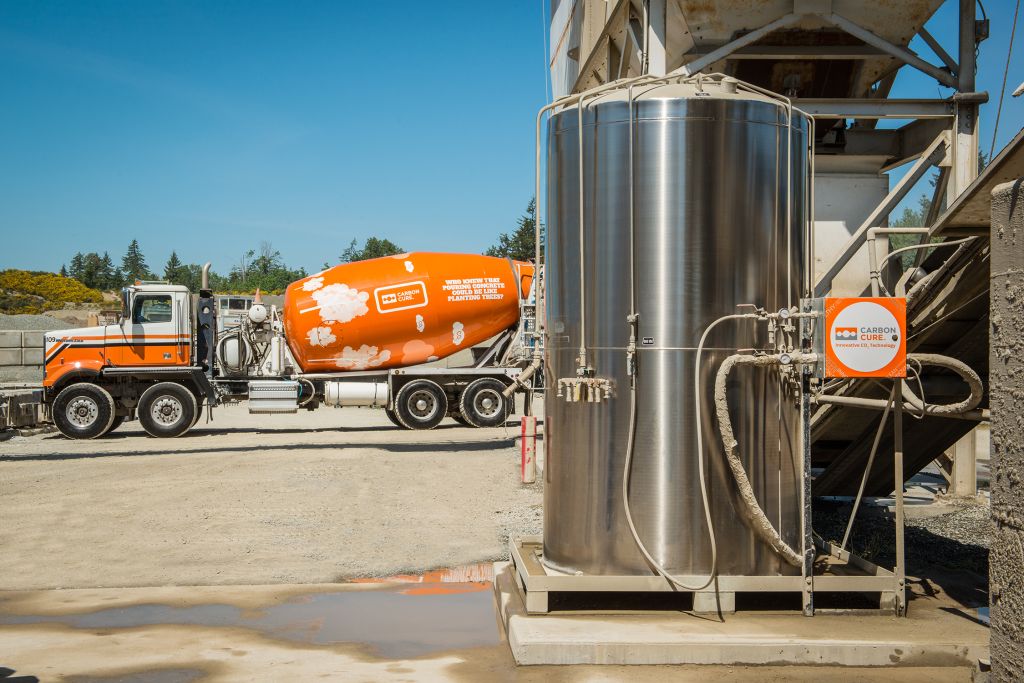Published April 10, 2024 • 5 Min Read
Prepare your company to eliminate greenhouse gasses and support Canada’s 2050 net-zero target.
There will always be strength in numbers. We’re better when we work together. Be it on a large global scope or at the community level, change happens more quickly and effectively. Eliminating greenhouse gasses (GHGs) from coast to coast is no different. Canada’s ability to become a net-zero nation by 2050 will be made possible by businesses, particularly small- to medium-sized ones, that take action now.
It makes sense. More than 99% of businesses in Canada are small- and medium-sized enterprises (SMEs). Small businesses in particular, which are considered companies with 99 or fewer paid employees, account for nearly 68% (8.2 million people) of the private sector workforce; medium-sized businesses (100‒499 employees) make up another 20%.
“We often see that the perception from these sizes of businesses is that they are too small to make a difference when it comes to reducing their carbon footprint, but the reality is that the world is transitioning and it is going to impact every business in every industry,” says Priyanka Lloyd, Executive Director of Green Economy Canada.
That’s what makes organizations like Green Economy Canada so important. Green Economy Canada works with SMEs to develop achievable action plans that help move companies closer to a low-carbon future. Currently there are 250 organizations in Green Economy Canada’s network and to-date they’ve worked with over 600 businesses nation-wide to collectively reduce more than 225,000 GHGs. That’s equivalent to taking 69,000 cars off of the road for one year.
“We can transition the bulk of our economy, but if we don’t engage the bulk of the businesses that the economy is formed of, which is small- to medium-sized businesses that make up more than half of our GDP and employ almost nine in 10 private sector workers, the reality is we’re not going to get to where we need to be,” says Lloyd.
The Canadian Net-Zero Emissions Accountability Act, a law that came into place on June 29, 2021, solidified Canada’s commitment to net-zero emissions by 2050. It’s the foundation to GHG elimination nation-wide. More recently, the 2030 Emissions Reduction Plan (2030 ERP), a framework that received input from 30,000 Canadians, including business owners, Indigenous Peoples, youth, and more, outlines specific and actionable items to help meet the 40 to 45% GHG reduction by 2030. The 2030 ERP is ambitious and includes initiatives like reducing energy costs for homes and buildings, encouraging the use of electric vehicles, addressing carbon pollution in the oil and gas sector, changing infrastructure to support renewable electricity, and more.
Lloyd agrees that the challenge now is to follow through on these commitments. As a nation, Canada has work to do.
According to the Government of Canada’s 2023 Progress Report on the 2030 ERP (released December 2023), we’re behind target. The Canadian Climate Institute, a nonpartisan policy think tank, conducted an independent assessment of the latest progress report and found that if we had not adopted any new policies since 2015, our national emissions would be 7% higher than they are today and 41% higher than the projected emissions in 2030. With the current policies in place, we’re on track to reduce emissions 34% to 36% by 2030, which is behind the 2030 ERP’s projection of 40% to 45%.
Still, it’s still within reach, though wider adoption is needed
“Policy can only do so much and the change is going to be driven by what happens in our homes, in our businesses, and in our local communities,” says Lloyd.
Government funding to supporting small- and medium-sized businesses in Canada
In the murky world of initiatives and grants, services like GrantMatch offer business owners and leadership teams a helping hand. With insight into available programs, many of which are highly competitive, along with the technical expertise required to be a successful applicant, GrantMatch uses its inhouse software alongside its teams of specialized grant writers to pair companies with appropriate options and secure funding to make impactful and lasting change. It has collectively secured over $300 million in government funding for its client base, spanning a variety of industries, from food and beverage, manufacturing, agriculture, technology and more.
“The cost of borrowing money for businesses continues to rise and it’s becoming increasingly challenging to get business loans. Grants are a non-dilutive option,” says Gibson Ingram, Director of Product Marketing and Growth at GrantMatch. “They’re not a loan, they’re not repayable, and so grants are becoming more and more important to help get businesses to the next step.”
The grant landscape can be daunting, Ingram notes, but there’s help out there. GrantMatch Hub is a sound starting point. It connects the dots between companies and current grant programs that are applicable to different businesses based on industry, company size and more.
A number of federal tax credits are also available to help businesses adopt clean technology and Lloyd recommends checking with the local utility company to see what’s potentially available for credits or rebates in your area.
There’s the Climate Action Bootcamp, too, an introductory workshop by Green Economy Canada that helps SMEs understand their business case for reducing emissions along with examples of steps that can be taken to get there. It’s just an hour-long commitment and registration for the upcoming workshops (there will be two held initially) open in April 2024.
“Climate action is one of those untapped levers that you can be using to make your business stronger and more competitive,” says Lloyd. “It’s one that you need to be paying attention to, so that you’re resilient to the changes that are coming as the world transitions.”
Current Federal Grants for Canadian Businesses
Green Industrial Facilities and Manufacturing Program
Eligibility: Manufacturing sector, governments, nonprofits, and commercial businesses
Funding: Up to $20,000,000
Application Status: The Energy Efficiency Solutions track is expected to reopen in 2024
SCAP ON – Dairy Processing Modernization Initiative
Eligibility: Dairy processors in Ontario
Funding: Up to 50% of eligible costs, maximum of $200,000
Application Status: Opens April 2, 2024
This article is intended as general information only and is not to be relied upon as constituting legal, financial or other professional advice. A professional advisor should be consulted regarding your specific situation. Information presented is believed to be factual and up-to-date but we do not guarantee its accuracy and it should not be regarded as a complete analysis of the subjects discussed. All expressions of opinion reflect the judgment of the authors as of the date of publication and are subject to change. No endorsement of any third parties or their advice, opinions, information, products or services is expressly given or implied by Royal Bank of Canada or any of its affiliates.
Share This Article






